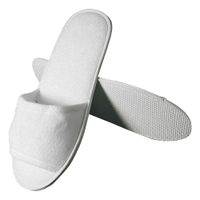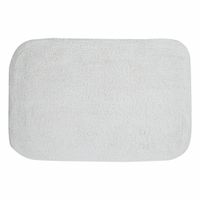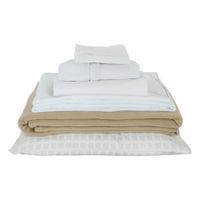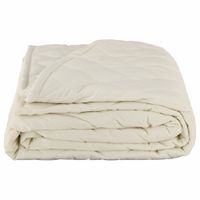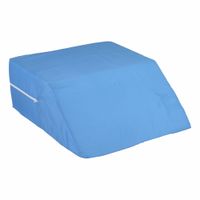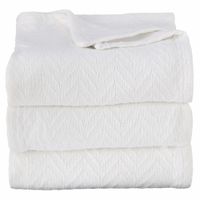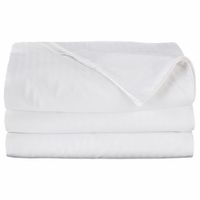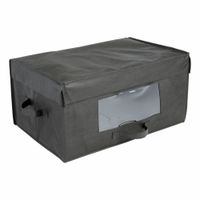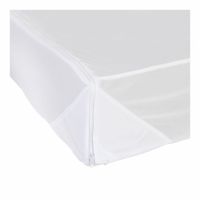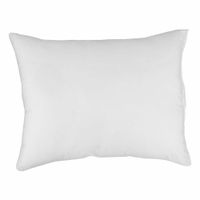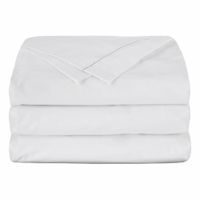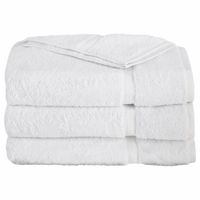Call +(254) 703 030 000 / 751 483 999 / 721 704 777
.....Read More
Frequently Asked Questions
What are the best materials for bedding to improve sleep comfort?
The best materials for bedding to improve sleep comfort include:
1. **Cotton**: Known for its breathability and softness, cotton is a popular choice for sheets and pillowcases. It absorbs moisture, keeping you cool and dry throughout the night.
2. **Linen**: Made from flax fibers, linen is highly breathable and moisture-wicking. It has a natural texture and becomes softer with each wash, making it ideal for hot climates.
3. **Bamboo**: Bamboo bedding is eco-friendly, hypoallergenic, and highly breathable. It has natural temperature-regulating properties, keeping you cool in summer and warm in winter.
4. **Silk**: Luxurious and smooth, silk is gentle on the skin and hair. It is naturally hypoallergenic and regulates temperature well, providing comfort in various climates.
5. **Tencel**: Made from eucalyptus wood pulp, Tencel is soft, breathable, and environmentally friendly. It has excellent moisture-wicking properties, making it suitable for sensitive skin.
6. **Microfiber**: A synthetic option, microfiber is soft, durable, and affordable. It is less breathable than natural fibers but provides warmth and comfort in cooler climates.
7. **Wool**: Wool bedding, such as blankets and mattress toppers, offers excellent insulation and moisture-wicking properties. It is naturally resistant to dust mites and mold.
8. **Down and Down Alternatives**: Down comforters and pillows provide warmth and softness. Down alternatives, made from synthetic fibers, offer similar comfort for those with allergies.
9. **Memory Foam**: Used in mattresses and pillows, memory foam conforms to the body's shape, providing support and pressure relief. It is ideal for those with joint or back pain.
10. **Latex**: Natural latex is durable, supportive, and hypoallergenic. It offers a responsive feel and is resistant to dust mites and mold.
Choosing the right material depends on personal preferences, climate, and any specific allergies or sensitivities.
How often should linens and bedding be washed to maintain hygiene?
Linens and bedding should be washed regularly to maintain hygiene and ensure a healthy sleeping environment. Sheets and pillowcases, which come into direct contact with the skin, should ideally be washed once a week. This frequency helps remove sweat, body oils, dead skin cells, and dust mites that accumulate over time.
For pillow protectors and mattress covers, washing every one to two months is generally sufficient, as they are not in direct contact with the skin but still collect dust and allergens.
Blankets and comforters, depending on their use and exposure, can be washed every two to three months. However, if they are used without a top sheet, they should be washed more frequently, about once a month.
Duvet covers, similar to sheets, should be washed every one to two weeks, especially if they are used without a top sheet.
Pillows themselves should be washed every three to six months to remove dust mites and allergens. Check the care label for specific washing instructions, as some pillows may require dry cleaning or special care.
For those with allergies or asthma, more frequent washing may be necessary to reduce allergens. Additionally, if someone is ill, it is advisable to wash their bedding more frequently to prevent the spread of germs.
Always follow the care instructions on the labels to maintain the quality and longevity of your linens and bedding. Using hot water and a high-temperature dryer setting can help kill bacteria and dust mites, but ensure the fabric can withstand such conditions.
What is the difference between a duvet and a comforter?
A duvet is a soft, flat bag filled with down, feathers, wool, or a synthetic alternative. It is designed to be used with a removable cover, similar to a pillow and pillowcase. The cover protects the duvet and can be easily removed for washing, allowing for versatility in style and ease of maintenance. Duvets are typically warmer and fluffier, providing a cozy, cloud-like feel. They are often used in Europe and are part of a bedding system that includes a fitted sheet and pillowcases.
A comforter, on the other hand, is a thick, quilted blanket filled with synthetic fibers, down, or other materials. It is stitched to keep the filling evenly distributed and is used as a standalone bed covering. Comforters are generally less fluffy than duvets and are often part of a bedding set that includes matching pillow shams and sometimes a bed skirt. They are more common in the United States and are designed to be used without a cover, though they can be layered with sheets and blankets.
The primary differences between a duvet and a comforter lie in their construction, use, and maintenance. Duvets require a cover and offer more flexibility in terms of style and warmth, while comforters are simpler to use but may require more frequent washing. Duvets are typically warmer and more luxurious, whereas comforters are more straightforward and often less expensive.
How do mattress and pillow protectors help with allergies?
Mattress and pillow protectors help with allergies by acting as a barrier against allergens such as dust mites, pet dander, mold, and pollen. These protectors are typically made from tightly woven fabrics or materials with special coatings that prevent allergens from penetrating the surface. Dust mites, which are a common trigger for allergies, thrive in warm, humid environments like mattresses and pillows. By encasing these items in protectors, you limit the mites' access to their primary food source, which is dead skin cells, thereby reducing their population.
Additionally, protectors are often designed to be waterproof, preventing moisture from seeping into the mattress or pillow. This is crucial because moisture can lead to mold and mildew growth, which are also common allergens. By keeping the sleeping environment dry, protectors help minimize the risk of mold-related allergies.
Protectors are usually easy to remove and machine washable, allowing for regular cleaning. This frequent washing helps eliminate any allergens that may have accumulated on the surface, further reducing exposure. Some protectors are also treated with antimicrobial agents that inhibit the growth of bacteria and fungi, providing an extra layer of protection against allergens.
Overall, mattress and pillow protectors create a healthier sleeping environment by reducing the presence of allergens, thereby alleviating allergy symptoms such as sneezing, runny nose, and itchy eyes. This can lead to improved sleep quality and overall well-being for allergy sufferers.
What are the benefits of using a bed skirt or bed wrap?
A bed skirt or bed wrap offers several benefits:
1. **Aesthetic Appeal**: It enhances the overall look of the bedroom by providing a finished appearance. It hides the box spring, bed frame, and any under-bed storage, contributing to a tidy and cohesive look.
2. **Storage Concealment**: It effectively conceals items stored under the bed, maintaining a clutter-free appearance. This is particularly useful in smaller spaces where under-bed storage is necessary.
3. **Dust Protection**: A bed skirt acts as a barrier against dust accumulation under the bed, helping to keep the area cleaner and reducing the need for frequent cleaning.
4. **Versatility**: Available in various colors, patterns, and materials, bed skirts can be easily changed to match different bedding sets or seasonal decor, offering flexibility in design.
5. **Cost-Effective**: Bed skirts are generally affordable and can be a cost-effective way to update the look of a bedroom without investing in new furniture or bedding.
6. **Easy Maintenance**: Most bed skirts are machine washable, making them easy to clean and maintain. This convenience adds to their practicality.
7. **Protection for Bed Frame**: They can protect the bed frame from scratches and damage, especially if the bed is frequently moved or adjusted.
8. **Temperature Regulation**: In some cases, a bed skirt can help with temperature regulation by providing an additional layer of fabric that can help insulate the bed area.
9. **Noise Reduction**: It can help dampen noise from under the bed, such as the sound of items shifting or moving.
10. **Customization**: Custom bed skirts can be tailored to fit specific bed sizes and styles, ensuring a perfect fit and personalized look.
How can I properly store linens and bedding when not in use?
To properly store linens and bedding when not in use, follow these steps:
1. **Clean and Dry**: Ensure all linens and bedding are clean and completely dry before storing to prevent mold and mildew. Wash them according to care instructions and allow them to air dry or use a dryer.
2. **Folding**: Neatly fold sheets, pillowcases, and duvet covers to minimize wrinkles and save space. For fitted sheets, tuck the elastic corners into each other to create a rectangle before folding.
3. **Storage Containers**: Use breathable storage containers like cotton or linen bags to allow air circulation. Avoid plastic bags or airtight containers, which can trap moisture and lead to mildew.
4. **Labeling**: Label containers with the contents and sizes for easy identification. This is especially useful if you have multiple sets.
5. **Location**: Store in a cool, dry place away from direct sunlight to prevent fading and deterioration. A linen closet, under-bed storage, or a dedicated shelf works well.
6. **Protection**: Add lavender sachets or cedar blocks to deter pests like moths and to keep linens smelling fresh. Avoid mothballs as they can leave a strong odor.
7. **Rotation**: Rotate linens every few months to ensure even wear and to keep them fresh. This is particularly important for seasonal bedding.
8. **Avoid Overcrowding**: Do not overstuff storage areas. Allow space for air circulation to keep linens fresh and prevent creasing.
9. **Special Care Items**: For delicate items like heirloom quilts, wrap them in acid-free tissue paper and store them flat to prevent damage.
By following these steps, you can maintain the quality and longevity of your linens and bedding while they are not in use.
What is the best way to choose the right pillow for sleeping comfort?
To choose the right pillow for sleeping comfort, consider the following factors:
1. **Sleeping Position**:
- **Back Sleepers**: Opt for a medium-thick pillow that supports the natural curve of the neck.
- **Side Sleepers**: Choose a firm, thick pillow to fill the space between the ear and shoulder.
- **Stomach Sleepers**: A soft, thin pillow is ideal to prevent neck strain.
2. **Pillow Fill Material**:
- **Memory Foam**: Offers good support and conforms to the shape of your head and neck.
- **Down/Feather**: Soft and adjustable, but may not provide enough support for some.
- **Latex**: Firm and supportive, with good durability.
- **Polyester**: Affordable and hypoallergenic, but may flatten quickly.
3. **Allergies**: If you have allergies, consider hypoallergenic materials like latex or synthetic fills.
4. **Firmness**: Choose a firmness level that aligns with your comfort preference and sleeping position.
5. **Size**: Ensure the pillow size matches your bed size and personal preference. Standard, queen, and king sizes are common.
6. **Temperature Regulation**: If you sleep hot, look for pillows with cooling technology or breathable materials.
7. **Durability**: Consider the longevity of the pillow material. Memory foam and latex tend to last longer than polyester.
8. **Trial Periods and Return Policies**: Opt for brands that offer trial periods or return policies to test the pillow's comfort.
9. **Budget**: Determine your budget, but remember that investing in a quality pillow can improve sleep quality.
10. **Health Considerations**: If you have specific health issues like neck pain, consult with a healthcare professional for recommendations.
By evaluating these factors, you can select a pillow that enhances your sleeping comfort and supports your overall health.
